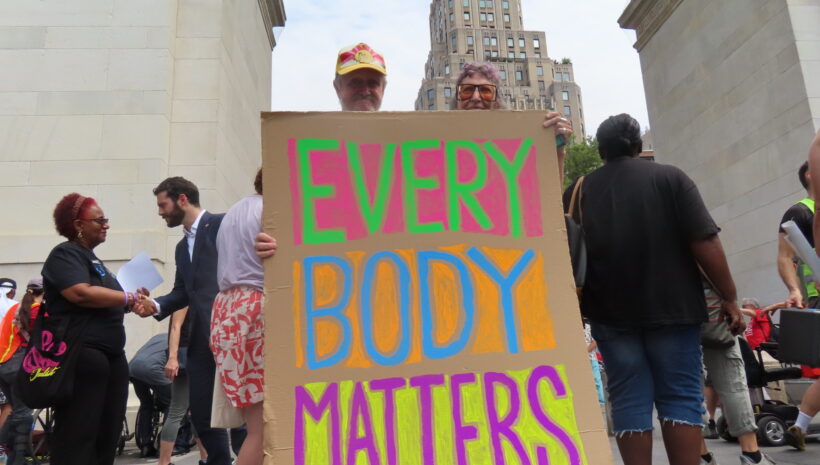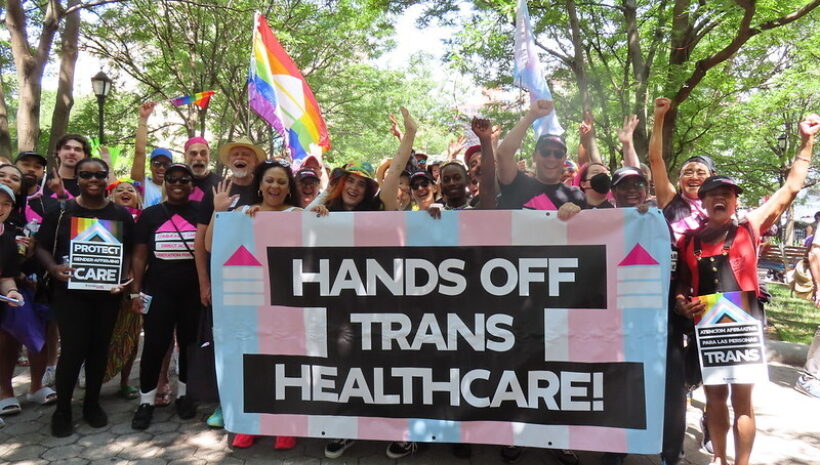[Editors note: Please email Tim Murphy, the current editor of the Housing Works update, with feedback or leads on stories.]
A month ago, we reported that Housing Works has been a part of a community campaign calling for a plan to end AIDS as an epidemic in New York State. A working paper, written primarily by Housing Works and Treatment Action Group, is circulating among HIV and healthcare policymakers in New York State. It breaks into components a plan to end AIDS as an epidemic in New York State. Each week in the Update, we have been looking at each of those components more closely.
This week, we focus on filling the gaps in the HIV continuum of care, to get as many HIV+ people in NY state as possible to stay in care, on treatment and to suppress their viral loads, as quickly as possible following an HIV diagnosis. New York State is doing better than the nation as a whole with this, but it could still be doing better. (Obviously continuing to press for supportive and affordable housing for low-income, vulnerable people with HIV/AIDS is a big part of keeping people in care.)
Our guest commentator this week is Dr. Barbara Zeller, chief clinical officer at HELP/PSI, which provides health care to thousands of vulnerable, low-income New Yorkers in the Bronx, Queens and Central Brooklyn, including about 2,000 patients with HIV/AIDS.
In May 2012, the New York State AIDS Institute released data from 2010 (chart is viewable in the working paper linked to above) showing that, while there were an estimated 156,287 HIV+ people in the state, 82 percent of them had actually been diagnosed with HIV, and of them, 66 percent had been in medical care within the year, 57 were in continuous care and 45 percent were virally suppressed. Among all people with HIV, then, including the undiagnosed, only 37 percent had undetectable viral loads due to consistent treatment. That still leaves a wide margin of people both vulnerable to getting sick from HIV and progressing to AIDS, and at risk of infecting others. (Research has shown that being virally undetectable can reduce transmission by up to 96 percent.)
Says Dr. Zeller:
“This gap between those infected with HIV and the virally undetectable is called ‘the treatment cascade,’ and it is challenging to address. There are huge barriers to closing the HIV treatment gap, including poverty, chaos, homelessness, drug abuse and mental illness. These things put people in and out of medical care.
“I hope that new health plans, as well as Medicaid expansion happening in NYState under the Affordable Care Act, will bring, and keep, even more people into care. The community health centers are gearing up for that. I would also like to see an HIV public-health campaign on streets and in subways, akin to those in recent years around smoking and sodas. We need messaging that says ‘Get tested for HIV, and if you’re HIV-positive, get into care and get to undetectable—it protects you and your community.’ If the state and city joined onto this, we could end AIDS in New York.”
What are your ideas, or your agency’s techniques, for bringing people into care—and keeping them in care? Share them with us!




